Montana’s Wild Heart: The Rocky Mountain Front
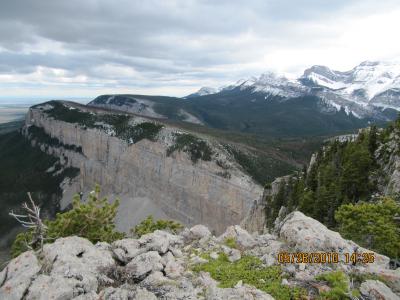
Montana’s Wild Heart: The Rocky Mountain Front
by Bill Cunningham
This excerpt is from Landscape and Legacy, The Splendor of Nature, History, and Montana’s Rocky Mountain Front; published by Dr. John A. Vollertson with Sweetgrass Books, Helena.
Two centuries ago when Lewis and Clark explored the vast land we now call Montana, they encountered a wilderness of some 93 million acres. Today, less than a tenth of this land remains wild and undisturbed, and much of this surviving wild country clings to the most isolated reaches of the Continental Divide between Marias and Rogers Passes. As such, wilderness and, arguably, its most dominant topographical feature — the Continental Divide — interconnect so as to form the wild heart and soul of Montana.
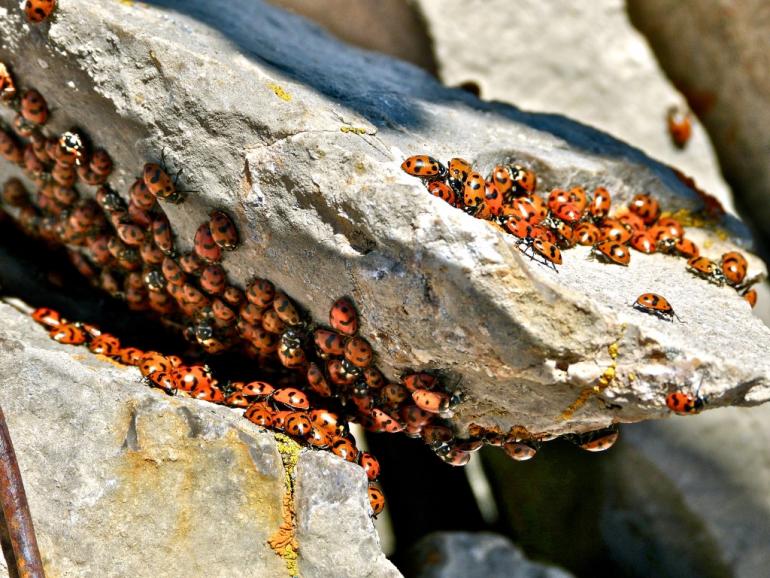
If there is any widely accepted sacred ground in Montana, it is the revered Bob Marshall country — aptly dubbed the flagship of our nation’s wilderness fleet. In shorthand, we affectionately call this vast, wild region. “The Bob,” to include not only the 1.5-million-acre designated wilderness core but the surrounding 1 million acres of contiguous — but unprotected — federally owned wildland that wraps around the core like a giant horseshoe. Ironically, the wildest part of this entire magnificent complex is de facto wilderness, lacking in any form of legislative recognition or protection. This is the eastern face of the Bob Marshall country — the Rocky Mountain Front — and it harbors the wildest and least-visited land in the entire complex.
What do we mean by the term Rocky Mountain Front? How might we geographically define this sweeping landscape? We could assemble a dozen locals who know and love this majestic land and come up with that many different definitions of the Front. So, for starters, I’ll quote myself when I once wrote that “The boundaries of the Front” stretch from Marias Pass 110 miles south to Rogers Pass and extend from the Continental Divide east to where the foothills interface with the Northern Great Plains. The country exemplifies a genuine ‘east of the mountains’ feeling marked by wind, eastward-leaning trees, sparse vegetation, great limestone reefs, narrow canyon mouths bound by sheer rock walls, along with a full complement of wild critters.”
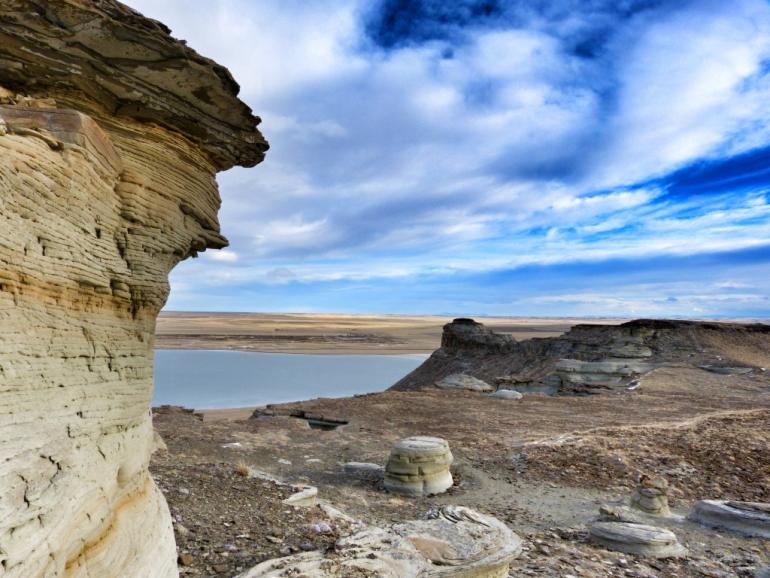
The above might serve as a thumbnail snapshot, but let’s take a closer look. Those of us who live for wild country naturally assume that the deeper a person penetrates the backcountry the wilder it is. Usually, that is the case, but the Front is a rare exception. You’re likely to experience deeper solitude and truer naturalness along the outer eastern fringes of the Front than in the center of the sprawling Bob Marshall Wilderness far to the west.
The Front is the most startling wild geography in America’s Northern Rockies south of the Canadian border, a boundary appropriately known by Native Americans as the “Medicine Line.” Although I am fortunate to live near the Front and have visited it countless times over the past 40-plus years, I never cease to marvel at this abrupt transition between mountains and prairie. From the Blackfeet holy land of the Badger–Two Medicine, the country stretches south in a grand spectacle of jagged limestone peaks, sheer walls, parallel reefs, and deep canyons, most of which is managed by the Forest Service as part of the Lewis and Clark National Forest. These nearly 400,000 acres of roadless federal land on the Rocky Mountain Front are an integral part of Montana’s largest expanse of unroaded terrain: the 2.5-million-acre Bob Marshall Wilderness Complex, which itself is part of an even larger, mostly intact ecosystem extending well into Canada.
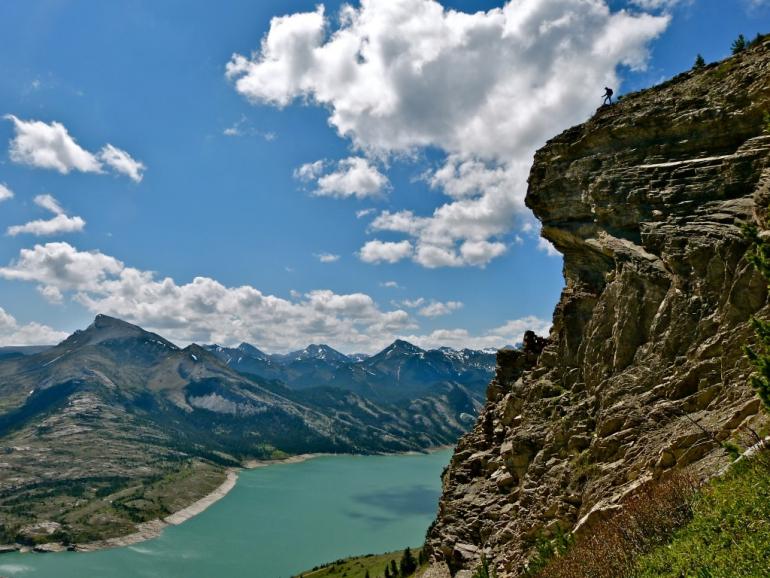
However, as impressive as these mountains are, much of the country’s mystique comes from the direction of the rising sun. Immediately east of the great gray ramparts, a virtually undeveloped expanse of foothills and prairie unfold in a mix of private, state, and Bureau of Land Management (BLM) ownership. This is classic front of the Front country, separated from the main upthrust of the Rocky Mountains. As a result, Montana’s share of the Rocky Mountain Front is the last and largest unspoiled meeting of peaks and plains between Canada and Mexico.
This country east of the Continental Divide is drier, colder, and windier than its west-side counterpart approximately eighty miles to the west. Of course, dryness is relative. The Badger–Two Medicine is comparatively moist, with the Front becoming progressively drier to the south. The lushness of the Badger may be due to the descent of the Continental Divide barrier, which reaches its lowest point in Montana at 5,215-foot Marias Pass. Prevailing storms from the west funnel into the Badger, where they mix with arctic air to produce abundant moisture. All along the Front, vegetation is sparse, lending a spacious, open character to the land bordering on the austere. Only a few hardy trees survive on exposed ridges and slopes. Gnarled limber pine cling like living statues sculpted into grotesque shapes by an almost constant wind.
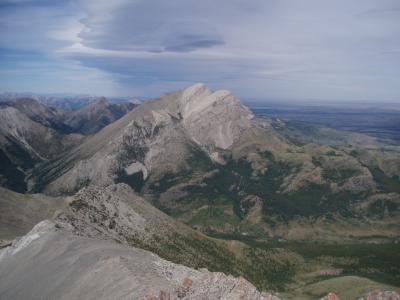
Wind is truly the signature climatic reality along the Front. When it eases, it is merely catching its breath so as to gather more strength. Here, we find a landscape where the trees lean east, away from the wind, and the people lean west, into the wind. The sometimes hurricane force of wind drove out most of the homesteaders during the 1910s and 1920s and deserves at least partial credit for limiting human population and development, a sort of cleansing agent helping to keep the country wild.
The Front is the kind of place that will raise your spirits while instilling humility to your soul.
Casey Perkins, RMF Campaign Director for the Montana
Wilderness Association writes:
The Rocky Mountain Front Heritage Act, sponsored by Senators Max Baucus and Jon Tester, proposes to keep the Front the way it is today. It combines new Wilderness additions to the Bob Marshall, a conservation management area to protect the current variety of uses outside the Wilderness, and a directive to federal agencies to prioritize noxious weed management. Most Montanans (over 70%) support this homegrown solution to keep this vibrant part of the economy and the landscape intact now and for future generations. Recently, the Heritage Act received unanimous, bipartisan support from the Senate Energy and Natural Resources Committee. It now awaits action by the full Senate and the House of Representatives.
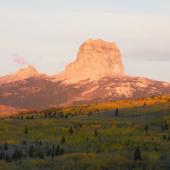

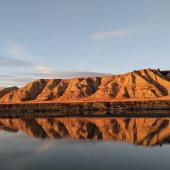



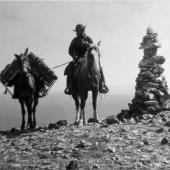





Leave a Comment Here